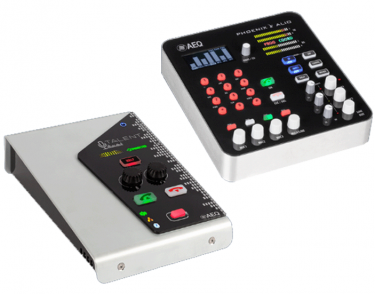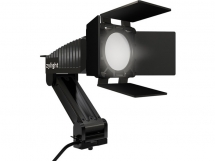| Українська | English | |||||||||||
|
|||||||||||
| News | About company | Service-centre | OB Van/SNG Rental | NextGen Energy Solutions | Contact us |
|
|
Engineering Service, Inc.
» News News AEQ has successfully completed compatibility tests of TALENT and ALIO Audiocodecs with Starlink. This system is very useful where there is no data coverage by GSM, 3G, 4G, etc., or the service is not guaranteed because of possible saturation of the network. Starlink can help to broadcast high-quality audio from anywhere in the world, with low delay, which allows live dialogue from both ends.
TALENT is an ultraportable IP audiocodec with input for professional microphone and output for headphones of any kind, with the ability to be controlled remotely through the Internet or through an App installed on a mobile phone using Bluetooth connectivity. ALIO is an IP audiocodec with integrated mixer of 4 microphones and stereo line input/output, with two communication channels and that can be controlled locally or through the Internet. Starlink represents a qualitative leap over conventional satellite systems such as InmarSAT, etc., as it provides stable connections of tens of Mbps with a cost comparable to that of terrestrial fiber lines, and a minimum investment, in geographical areas in constant expansion, soon, all over the world. It´s based on a low-orbit constellation of thousands of satellites, which allows for a very low delay (typically about 25ms) and consistent signal, as there will be several satellites in sight at all times. The antenna is a flat surface of 30x50 cm that is automatically oriented and weighs just over 4 kg. The billing is by time, "flat rate" with a very competitive cost. The router offers WiFi, but for our use it is convenient to add the optional Ethernet switch to the Kit, to provide wired connectivity to the audiocodecs, without further accessories or conversions. They offer business and private services. A private roaming service is enough to link the portable audiocodec with the audiocodec of the station, and at the same time give internet service to the event to be broadcast. The application note details the characteristics of the system, the different options, the installation for broadcasts, and the casuistry that arises, the problems that may arise and how to solve them. Then it details the simple process of installation, configuration and testing to create a Wifi for control and general use and an ethernet connection for the audiocodec. It goes on to explain how to configure the audiocodec to connect to the local network created by Starlink, how to generate a test call, and then, the final call to your station. The note ends by offering conclusions, which we can summarize by saying that: Starlink offers an additional connectivity path to those of 3G or 4G terrestrial coverage, also in broadcasts from remote spaces, its equipment cost, pricing and delay are excellent and it supersedes Inmarsat. On the contrary, the equipment is somewhat more cumbersome because of its dimensions and weight. In addition, there is additional capacity to surf the internet, communicate by voice or video conference, and even download streaming audio and any type of files without having to produce problems of cuts or quality failures. The private itinerant service with which we have done the tests, has shown reliability and quality. The possibility of suspending the service for monthly periods has been attractive in the evaluation. By Starlink policy, if billing is desired to a Company, it will be necessary to contract the corporate service, whose additional benefits, in our case apparently are not necessary. The roof-top roving kit is also much cheaper and more convenient to install and use than Inmarsat's in-vehicle systems and other satellite services. « To the list of news |
|
|||||||||||||||||
 |
+38 (044) 593-18-20 +38 (073) 593-18-20 +38 (096) 532-96-82 +38 (095) 532-96-82 Service center Telegram @Engineer_Service |

|
|
|||||
 |
e-mail: engineer-service.tv 15 Vavylovykh str., Kiev, 04060, Ukraine Authorized service centre of Panasonic, Sony, JVC, Fujinon, Canon |
|||||||








